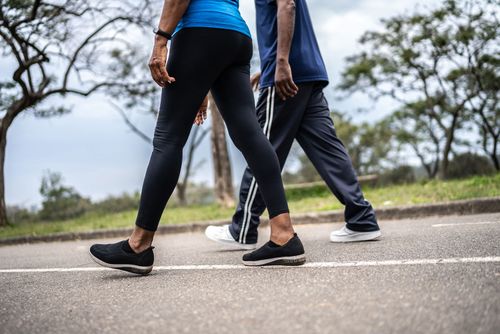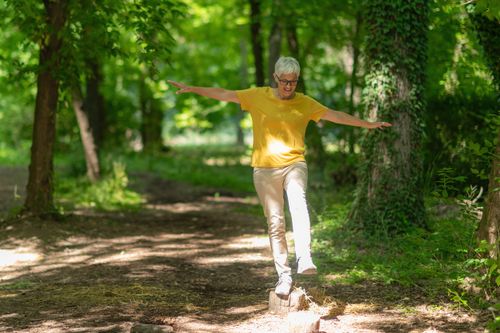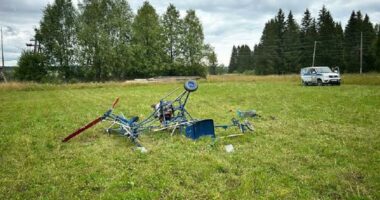
The study of 40 participants – all in similarly good health with no neuromuscular disorders – found that the amount of time one could hold a one-legged stance declined at the rate of 2.2 seconds per decade in the nondominant side and at the rate of 1.7 seconds per decade in the dominant side for both men and women when controlling for body size.
“Good balance provides the ability to carry out activities of daily living without the fear of falling, and this leads to improved quality of life and healthy aging,” he added.
The study of 40 participants – all in similarly good health with no neuromuscular disorders – found that the amount of time one could hold a one-legged stance declined at the rate of 2.2 seconds per decade in the non-dominant side and at the rate of 1.7 seconds per decade in the dominant side for both men and women when controlling for body size.
The new study compared this ability with other muscular factors such as hand grip and knee strength as well as gait speed.
While all the measurements declined with age – the dominant grip strength declined at a rate of 3.7 per cent and knee strength declined at a rate of 1.4 per cent per decade – the ability to balance while holding a one-legged stance deteriorated at the fastest rate.
How long should you be able to stand on one leg?
Balance is important for injury prevention, and those who are unable to balance on one leg for more than five seconds could be at risk of falling more, Kaufman said.
Separately, a June 2022 study found that the ability to balance is linked to a longer life, with an 84 per cent higher risk of death from any cause for people unable to stand on one leg unsupported for 10 seconds.

A good rule of thumb is to be able to hold the stance for about 30 seconds or longer for those 69 and younger, about 20 seconds for those 70 to 79 and 10 seconds for those older than 80, he added.
Doing a one-legged test does not require any special equipment and can be easily done at home, making it an easy health check to perform, Kaufman said.
For those unable to stand on one leg for long, it could be a symptom that they have a health condition, such as a cardiac problem or a brain or nervous system issue such as a stroke, dementia or Parkinson’s disease, according to Kaufman.
It could also be a sign someone is experiencing side effects from medication.
If someone is unable to stand on one leg for more than five seconds, Kaufman recommends making an appointment with a physician.
How to improve balance in old age
While the study only looked at adults 50 and older, the one-legged test is also “applicable to younger people in that, you know, you want to protect what you have,” Kaufman said.
“If you continue to train your balance system as you’re young, you should maintain that as you age.”
People of all ages should be physically active and work on their strength and balance because doing so will help in achieving healthy aging, said Dr Anat Lubetzky, an associate professor of physical therapy at New York University and director of the university’s doctoral program in rehabilitation sciences.
Lubetzky was not part of the study.
“Balance is essential for many different tasks and we should work on all of them – walking while talking, turning (your) head, quick turns, catching something, walking in the dark, walking on different surfaces… and how to get up and down from a fall,” Lubetzky said in an email.
“If we practice standing on one leg, we’ll get better at standing on one leg,” she said.
“That’s great but it’s not going to solve all balance problems and fall risks that happen with aging… People should work on all aspects of balance – static, dynamic and overall strength, including but not limited to standing on one leg.”
To improve your balance, Lubetzky recommends fitness or balance classes, such as yoga classes, that usually aim for about 30 or 60 seconds of balance on each leg.
Another quick and easy exercise is to put a sock on when standing on a single leg without rushing and without falling on both sides, she added.







